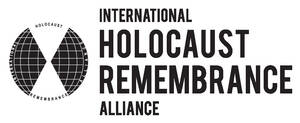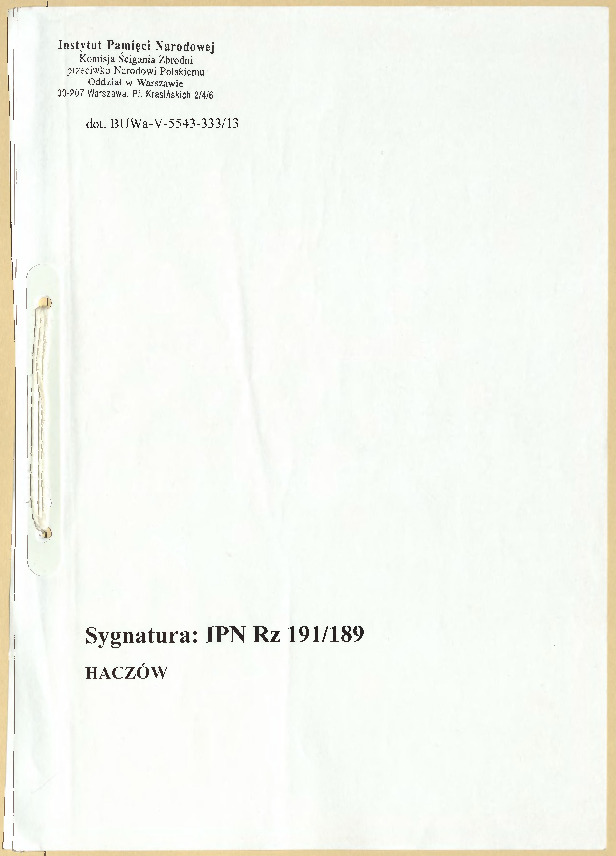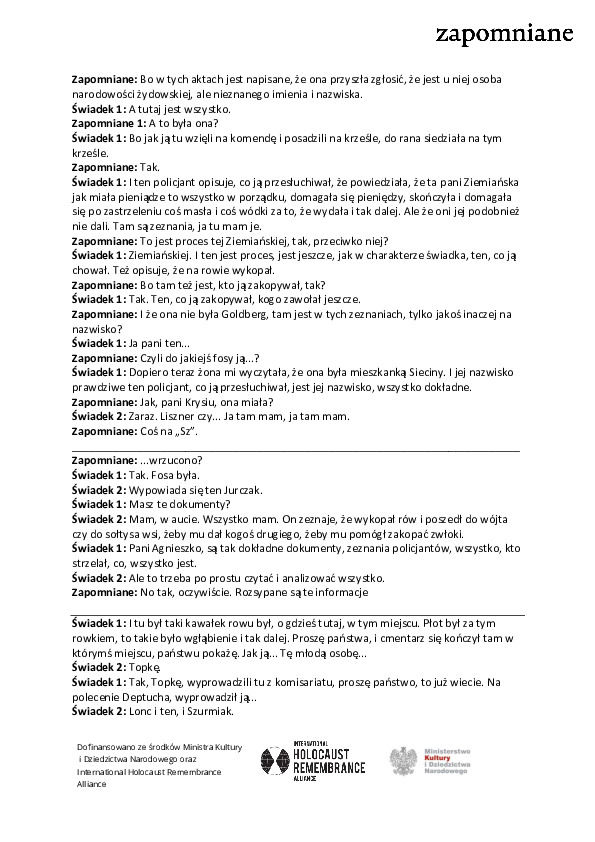Haczów
Borough of Haczów , Brzozowski District, Podkarpackie VoivodshipType of place
Under the fence of the parish cemetery in HaczówInformation about the crime
The information on the circumstances of the murder of the Jewish woman named Tauba in Haczów can be found in the investigation files under the number IPN Rz 358/139:
Jan S.: “In the summer of 1943, I do not remember the exact date; I was on telephone duty at the police station in Haczów as a blue policeman. Around 4 p.m., Maria Z. came to the station. She wanted to see the commanding officer Józef D. Maria Z. reported that a Polish citizen of Jewish nationality of unknown last name was hiding at her house, or rather in the barn, and told D. to take her away. […] Marian L. went to get her. After about an hour, he led the Jewish woman to the police station in Haczów, where she spent one night. In the morning of the second day, she was shot by Marian L. with a rifle in the back of the head, next to the post in Haczów in the cemetery”.
Walenty F.: “I went to her house with Mrs. Z. Upon entering the flat, I found Jewish woman Fleschman at the furnace, where she was warming herself. When I asked her what she was doing here, Citizen Fleschman replied that we should finish her off as she had nothing to do and nowhere to hide. As a policeman at the Haczów police station, I picked up the aforementioned Jewish woman and brought her to the station. After a few minutes, the Jewish woman said she was hungry, so I went home and brought her bread and tea. She stayed overnight, and the next day, she was shot dead by former police officers Marian L. and Jan S.”.
Maria Z. “There was a knock on the door of my flat from a Jewish woman called Topka, aged approx. 20. I do not know her full name”.
An indictment against Maria Z.: “In the spring of 1942, the German occupation authorities, aiming at the biological destruction of Polish citizens of Jewish nationality, concentrated the Jews living in the Brześć district in the Jasienica ghetto. At that time, a Polish citizen of Jewish nationality, a certain N. Tauba, left her family home before being imprisoned in the ghetto in Jasienica and began hiding in the Haczów district and the surrounding area with local farmers and the forest until the autumn of 1943. In the autumn of 1943, on an unknown date, the Tauba mentioned above, as a result of cold and hunger, left the shelter in the forest and went to Maria Z., who lived in Haczów in the Brześć district, where she stayed for about four days. On the fourth day of her stay, Maria Z. went to the blue police station in Haczów to inform the officers of the station that there was a Jewish woman in her house. As a result, police officers detained Tauba and led her to the place of execution – the cemetery in Haczów, where she was killed”.
Minutes of the main hearing on 23 October 1952, excerpt from the testimony of Maria Z.:
“I knew Tauba from before the war. I used to go to her parents’ house to wash laundry. This Jewish woman was 20 years old at the time of the occupation. During the occupation, she was with me twice. Once, she stayed with me for three weeks and left. Then, after about a week, she came back and stayed with me for about 3-4 days until she was taken from the house by two blue police officers”. (IPN Rz 358/139)
In May 2022, we met in Haczów with a group of residents who wanted to commemorate the murdered Tauba:
“- There was a little ditch somewhere in here. The fence was behind this ditch, and there was a depression here. I will show you where the cemetery ended. The young girl Topka was led out of the police station, you already know. And here, somewhere in this area. But I don’t know if it was here or further away.
– Was she also buried under the cemetery fence? Not on the cemetery grounds?
– No, in the ditch”. (May, 2022)
We are still looking for information about Tauba. It has not yet been possible to establish where she came from, exactly how old she was at the time of her death, or even what name she bore. The fate of her family also remains unknown.
Sources
Transkrypcje
Contact and cooperation
We are still looking for information on the identity of the victims and the location of Jewish graves in Haczów. If you know something more, write to us at the following address: fundacjazapomniane@gmail.com.
Bibliography
IPN Rz 191/189 The Register of Killing Sites and Crimes committed by the Germans in Poland between 1939 and 1945 in brzozowski district
PN Rz 191/222 Surveys of The Chief Commission for the Examination of German Crimes in Poland – Repressions against the Jewish population before the establishment of the ghetto, brzozowski district
IPN Rz 2448/845
IPN Rz 358/139 File on Maria Ziemiańska, father’s name: Jan, born 11.11.1901, accused of informing the police about the place of hiding of a Jewish family in Haczów in 1943, an act under Article 1.pt. 2 of The Polish Committee of National Liberation Decree of 31 August 1944.
Recording of the Zapomniane Foundation (audio file), name: Roman and Krystyna W., inhabitants of the Haczów borough, topic and keywords: Tauba, Jewish grave by the parish cemetery, interviewed by Anna Skiba and Agnieszka Nieradko, Haczów, 16 May 2022.
Recording of the Zapomniane Foundation (audio recording), name: resident of the village of Jabłonica Polska, born 1935, topic and keywords: Tauba, Jewish grave at the parish cemetery, interview by Anna Skiba and Agnieszka Nieradko, Jabłonica Polska, July 17, 2023.
Recording of the Zapomniane Foundation (audio recording), name: resident of the village of Haczów, Edwarda Ł., subject and keywords: Tauba, Jewish grave at the parish cemetery, interviewed by: Anna Skiba and Agnieszka Nieradko, Haczów July 17, 2023
We have collected the materials about this village thanks to the funding provided by the International Holocaust Remembrance Alliance as part of the project “The rural Holocaust. Collecting and safeguarding the never recorded testimonies 100 forgotten Jewish graves 2021-2022”. The materials for this website were developed, digitized and made available as part of the project “Development of a digital archive of Jewish war graves outside the extermination camps and educational use of archive resources” thanks to funding from the Minister of Culture and National Heritage from the Cultural Promotion Fund.

 IPN Rz 191-189 Rejestr miejsc i Faktów Zbrodni Hitlerowskich - Haczów
IPN Rz 191-189 Rejestr miejsc i Faktów Zbrodni Hitlerowskich - Haczów Haczów - transkrypcja
Haczów - transkrypcja